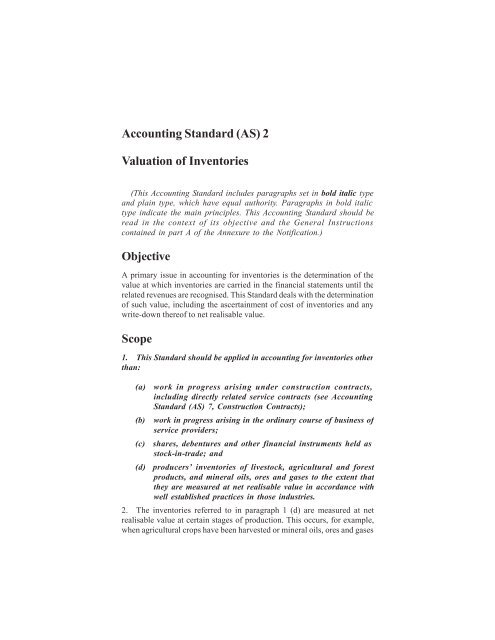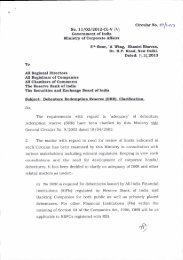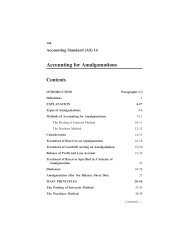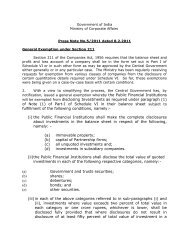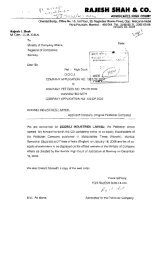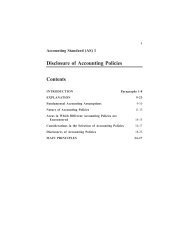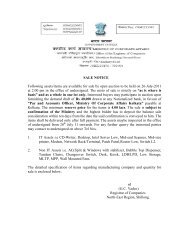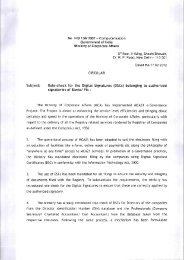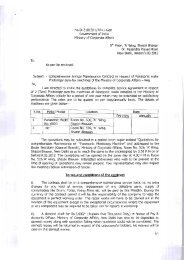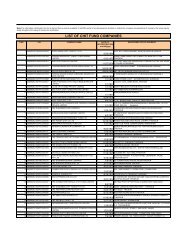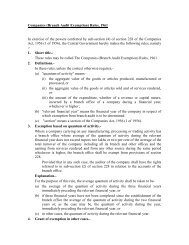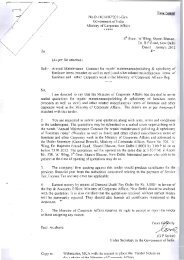Accounting Standard 2; Valuation of Inventories
Accounting Standard 2; Valuation of Inventories
Accounting Standard 2; Valuation of Inventories
Create successful ePaper yourself
Turn your PDF publications into a flip-book with our unique Google optimized e-Paper software.
<strong>Accounting</strong> <strong>Standard</strong> (AS) 2<br />
<strong>Valuation</strong> <strong>of</strong> <strong>Inventories</strong><br />
<strong>Valuation</strong> <strong>of</strong> <strong>Inventories</strong> 43<br />
(This <strong>Accounting</strong> <strong>Standard</strong> includes paragraphs set in bold italic type<br />
and plain type, which have equal authority. Paragraphs in bold italic<br />
type indicate the main principles. This <strong>Accounting</strong> <strong>Standard</strong> should be<br />
read in the context <strong>of</strong> its objective and the General Instructions<br />
contained in part A <strong>of</strong> the Annexure to the Notification.)<br />
Objective<br />
A primary issue in accounting for inventories is the determination <strong>of</strong> the<br />
value at which inventories are carried in the financial statements until the<br />
related revenues are recognised. This <strong>Standard</strong> deals with the determination<br />
<strong>of</strong> such value, including the ascertainment <strong>of</strong> cost <strong>of</strong> inventories and any<br />
write-down there<strong>of</strong> to net realisable value.<br />
Scope<br />
1. This <strong>Standard</strong> should be applied in accounting for inventories other<br />
than:<br />
(a) work in progress arising under construction contracts,<br />
including directly related service contracts (see <strong>Accounting</strong><br />
<strong>Standard</strong> (AS) 7, Construction Contracts);<br />
(b) work in progress arising in the ordinary course <strong>of</strong> business <strong>of</strong><br />
service providers;<br />
(c) shares, debentures and other financial instruments held as<br />
stock-in-trade; and<br />
(d) producers’ inventories <strong>of</strong> livestock, agricultural and forest<br />
products, and mineral oils, ores and gases to the extent that<br />
they are measured at net realisable value in accordance with<br />
well established practices in those industries.<br />
2. The inventories referred to in paragraph 1 (d) are measured at net<br />
realisable value at certain stages <strong>of</strong> production. This occurs, for example,<br />
when agricultural crops have been harvested or mineral oils, ores and gases


